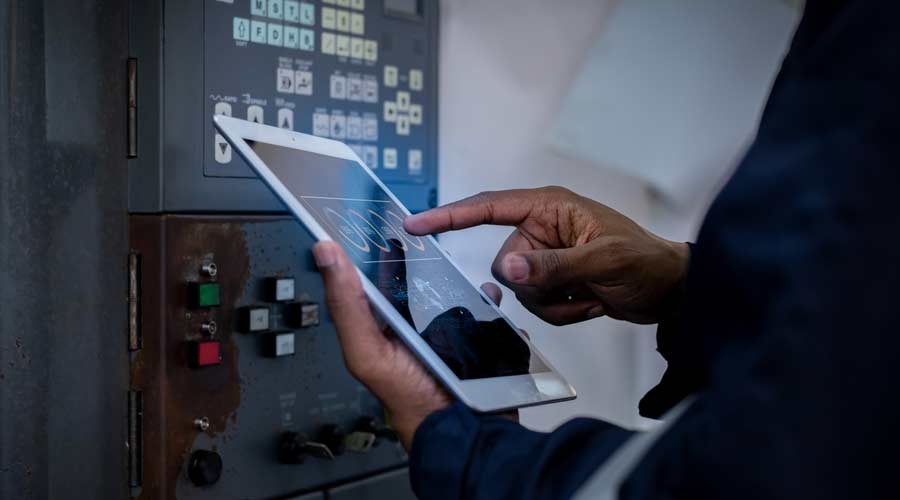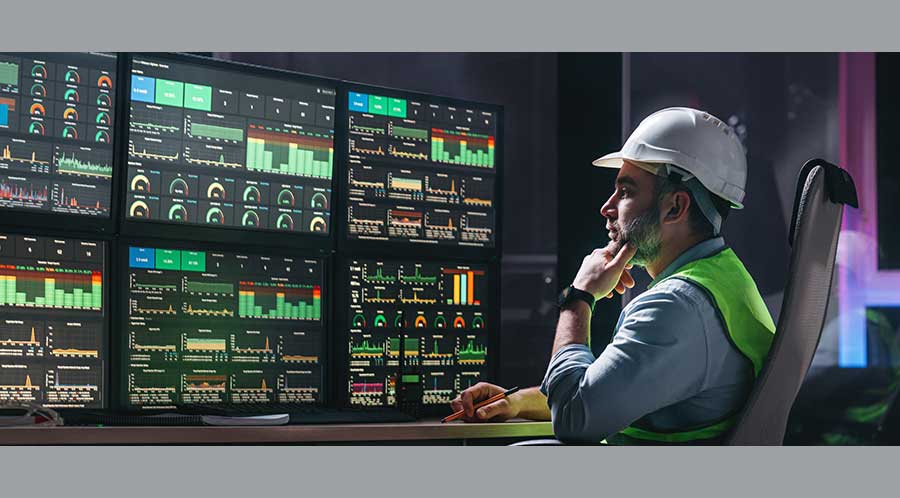Avoiding Costly CMMS Mistakes
Managers looking for a new or upgraded CMMS continue to make a host of common mistakes that undermine their organizations’ investments in the software.
By Dan Hounsell, Senior Editor
Computerized maintenance management systems (CMMS) offer maintenance and engineering managers and their organizations a range of potential benefits, from enhanced technician productivity to streamlined inventory management and beyond.
Unfortunately, managers and their departments looking for a new or upgraded CMMS continue to make a host of common mistakes that undermine their organizations’ investments in the software. By avoiding these mistakes, managers can ensure that a CMMS provides the promised benefits for both the department and the organization.
Roles and benefits
For many managers, misconceptions and mistakes related to a CMMS do not start with selecting the wrong software. They often start with a basic misunderstanding of the purpose and role of a CMMS.
"The biggest misconception I see is that thinking that a CMMS or any other technology can cure a problem that is actually an underlying process or leadership issue,” says John Edwards, P.E., vice president and associate with Facility Engineering Associates. “For example, if an organization doesn't really have direction when it comes to its maintenance functions — how it wants to execute things, what its maintenance philosophy is — putting a tool on top of that isn't going to solve it. That's a leadership challenge that needs to be addressed.”
Such misconceptions can arise because managers have not kept up with advances in the features of a CMMS, as well as its capabilities and potential benefits for their departments.
"They see a CMMS as something that helps them track work orders, keep an asset history and manage inventory,” says John Rimer, president of FM360, a consulting firm. “But when you look at the overall scope of what they are trying to accomplish as a facilities program, that system should have so many more capabilities to automate processes and make the team as efficient as possible in gathering data so they can drive business decisions.
“Maybe the easiest misconception to draw is, the CMMS is a business tool, not just for helping you manage day to day. A lot of times, the CMMS gets relegated to helping manage work orders. It'll do that, but it needs to be doing a lot more than that.”
Making the choice
These misguided assumptions about the roles and capabilities of a CMMS lay the groundwork for ensuing mistakes. The first place these mistakes show up is when it comes time to select the CMMS.
"They start shopping before they know what they want,” Rimer says. “There are great products out there, and managers might end up selecting a product or software that is great in certain areas, but it lacks some of the key functionality that they really needed. I always advise customers that before they go shopping, they need to actually talk about what they need this system to do both now and in the future. Set that vision, come up with a game plan, and develop your specifications and your requirements from there.”
Managers who understand what they want a CMMS to do for their departments stand a better chance of selecting software that addresses those needs. Those who do not tend to end up with a product that falls short.
"There are a few things we run into when organizations aren't pleased with the CMMS they selected,” Edwards says. “One goes back to that first misconception about CMMS being able to fix process or leadership problems. If the organization doesn't define its needs well or if they search out a CMMS, they run the risk of not getting something that's going to suit what they actually wanted to do.”
Managers who do not understand department needs before starting the CMMS process can make the mistake of relying on the software vendor to fill in the blanks on needs and expectations.
“A second mistake is just saying they need a CMMS and going out and asking for demos of products,” Edwards says. “Vendors will come in and talk about all the great features that all these different products have, and they'll show all the bells and whistles and fantastic things their software can do. But again, if you don't have processes in place and you don't know what your needs are, it becomes very hard to select it. It ends up being a selection based on who gave the best presentation rather than being the software that they actually need.”
Getting to work
Many managers assume that selecting a CMMS is the most challenging aspect of the entire process, but that generally is not the case. CMMS implementation is a complex process that comes with many opportunities to misstep, and the mistakes managers make earlier in the process only make implementation more problematic.
"When it comes to implementation, it's the blind leading the blind,” Rimer says. “Yes, the software company knows their software, but they are not facilities people. The CMMS providers are going to look to the facilities people and ask, ‘What do you want it to do?’ And the facilities people too often say, ‘We don’t know.’ That is the biggest disconnect.
“The facilities folks need a vision. They need to have a better understanding, not just what to do with the CMMS to make it work. They need to define the processes. They need to set the vision of the workflows and decide how they want to improve the program. Then they can work with a CMMS company to fashion it so that that tool does what they want it to do.”
Managers also slip up during implementation by not understanding the complexity of a CMMS and its wide-ranging impact on department operations and performance. A CMMS is not just another tool.
“You are implementing a cultural change in the organization, especially if you're going from not using a CMMS to using a CMMS,” Edward says. “It's a cultural and philosophical change for the organization, so it needs to be managed through a deliberate change-management process, not just a software buying process. That requires things like having the right person to be the champion of CMMS implementation, having those plans to get thought out before the software is bought, recognizing the time and the budget that are going to be needed in the implementation phase.”
Data in, data out
One critical function of a well-chosen CMMS is giving managers critical information on facility conditions and technician productivity. This information helps managers make decisions on everything from staffing levels and technician priorities to budgeting and resource allocation. Unfortunately, mistakes earlier in the CMMS process can have ripple effects that hamper this function.
For example, managers identifying department needs often make mistakes in how the CMMS will collect, store and access data on maintenance activities. The result is a database that cannot give managers the information they need.
"You need to have a standardized nomenclature,” Rimer says. “What do we call our locations? How do we label our assets? Make sure you define that standard. Then, of the data set we currently have, how much of that aligns with this standard? How accurate is that information?
“I have a lot of customers that I don't realize how ugly their data is. I have other customers who say, ‘We just need to throw it all away and start over.’ Those are probably the smart ones. Getting that data is probably the trickiest part.”
Edwards says managers also make the mistake of not establishing goals and needs during the early stages of the CMMS process.
“That's something we observe all the time, even from very mature organizations that have CMMS and have been using them for a long time,” he says. “They sometimes default to generating data from the CMMS reports that they can get out of the machine easily rather than reports that actually help them manage.
“It goes all the way back to the issue of planning and setting defined goals and outcomes that the organization is trying to achieve with its maintenance program and deciding how those outcomes should be measured, whether it's customer satisfaction or renovated completion rate.”
Perhaps the costliest mistake managers make in selecting and implementing a new or upgraded CMMS is underestimating the time and energy required to do the hard work early and the problems that decision can pose at every point of the process.
“You have to understand what it is you're looking for, the decision you're trying to make, how the data will inform that, how the software can be configured,” Edwards says. “That becomes one of the requirements that goes into your needs statement going all the way back to the beginning about understanding your processes.
“Before they buy the software, the organization should define the things they want to get out of the software. Then when they are evaluating various software products, have vendors show them how to get a report for this piece of information.”
Dan Hounsell is senior editor of the facilities market. He has more than 30 years of experience writing about facilities maintenance, engineering and management.
Related Topics:












